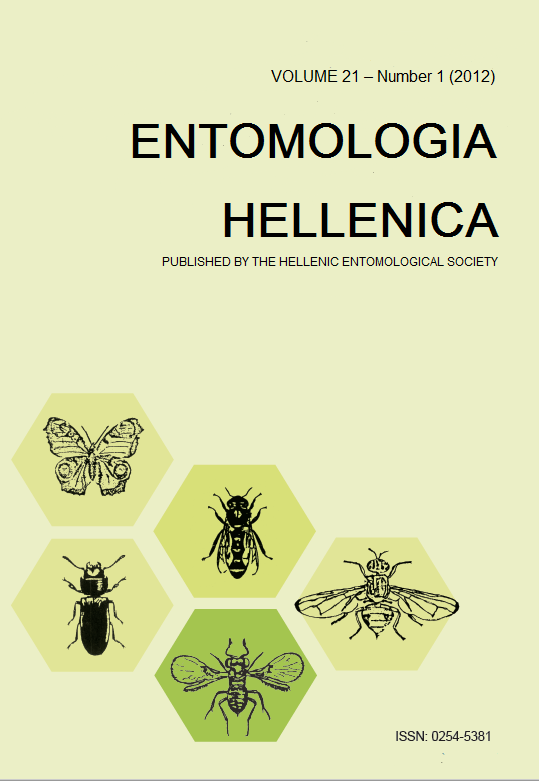Temperature dependent development of Phenacoccus solenopsis under laboratory conditions

Abstract
Cotton mealybug, Phenacoccus solenopsis Tinsley (Hemiptera: Pseudococcidae) is an important cotton pest in Punjab, India. Development of the immature stages (four instars in female and five in male) of P. solenopsis was observed at nine constant temperatures (15, 18, 20, 25, 30, 34, 35, 38, 40°C). Using the linear model, the lower temperature threshold (tmin) for development was estimated to be 4.93 and 2.95°C and the thermal constant (K) was 333.33 and 454.54 degree days for female and male, respectively. In addition, three nonlinear models (Lactin, Bieri-1 and 3rd order polynomial) were tested to describe the relationship between temperature and development rate and to estimate the upper developmental threshold (tmax) and the optimum temperature for development (topt). Our results proved that the Bieri-1 and Lactin models and provided the best fit (r2 = 93,4 – 99,9%) and estimated accurately all the three critical temperatures, ranged tmin = 5.06 – 5.25°C, topt = 33.55 – 33.60°C, tmax = 39.99 – 40.00°C, for the total development of females and tmin = 2.82 – 3.16°C, topt = 34.01 – 34.04°C, tmax =40.00 – 40.10°C, for the total development of males.
Article Details
- How to Cite
-
Kumar, S., & Kontodimas, C. (2012). Temperature dependent development of Phenacoccus solenopsis under laboratory conditions. ENTOMOLOGIA HELLENICA, 21(1), 25–38. https://doi.org/10.12681/eh.11515
- Issue
- Vol. 21 No. 1 (2012)
- Section
- Articles

This work is licensed under a Creative Commons Attribution-NonCommercial-ShareAlike 4.0 International License.
Authors who publish with this journal agree to the following terms:
Authors retain copyright and grant the journal right of first publication with the work simultaneously licensed under a Creative Commons 4.0 license.
Authors are able to enter into separate, additional contractual arrangements for the non-exclusive distribution of the journal's published version of the work (e.g. post it to an institutional repository or publish it in a book), with an acknowledgement of its initial publication in this journal. Authors are permitted and encouraged to post their work online (preferably in institutional repositories or on their website) prior to and during the submission process, as it can lead to productive exchanges, as well as earlier and greater citation of published work.


